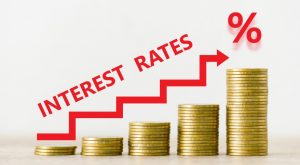Many people have opened bank savings accounts, but when it comes to long-term goals, they still keep their money in cash or physical wallets. The primary reason behind this is that banks offer fixed interest rates. In the current era of financial instability, people constantly look for ways to save money. One such way is by opening a 1 year fixed savings account. Here’s an extensive guide on how you can find the best 1 year fixed savings account with the interest rates and features you need.
What is a 1 Year Fixed Savings Account?

A 1-year fixed savings account is an interest-paying savings account offered by banks and building societies for a fixed amount of time. The money must be kept in the account for a fixed period to get a higher interest rate. The interest rate is usually higher than that of savings accounts that are available for longer periods.
Some banks offer savings accounts with rates of up to 6% AER. However, these rates are limited to those institutions’ high-street branches, which is why it’s worth checking if your bank or building society offers a 1-year fixed savings account with a higher rate before signing up.
Several financial institutions offer 1-year fixed savings accounts with up to 4.5% AER rates. SmartSave 1 Year FixedSaver offers 4.21% AER with a minimum deposit of £10,000 and a maximum of £85,000. Atom Bank 1 Year Fixed Saver offers 4.15% AER with a minimum deposit of £50 and a maximum of £100,000. If you’re looking for an interest-free savings account with higher rates, then this type is worth checking out.
Interest Rates for 1 Year Fixed Savings Accounts

A fixed-rate savings account offers higher rates of interest than an instant-access savings account. These accounts are also known as fixed term accounts or fixed rate bonds. The interest rates for a fixed-rate savings account are usually higher than those of an easy access savings account.
The interest rate for a fixed-rate savings account is determined when the money is initially deposited, and it remains the same throughout the term of the account. The advantage of a fixed-rate savings account is that the interest is guaranteed until the end of the term. This makes it a good choice for savers who are looking for a steady return on their money.
With most easy-access savings accounts, savers are only allowed to withdraw their money after the stipulated period of time in case they want to do any additional transactions. But with a fixed-rate savings account, savers can access the money at any time, making it more flexible and safe. However, savers must ensure that they invest enough money in their savings accounts to earn the desired interest rate and balance.
How to Get Started with 1 Year Fixed Savings Accounts?

Here are a few steps to get you started on building a 1-year fixed deposit account. First, decide on the amount of money you want to invest. Next, look for a bank that offers competitive interest rates and fees.
Finally, open an account at the bank and transfer your money over safely and securely. Now that you have your money, it’s time to choose a savings account.
There are several factors to consider when choosing a savings account, such as the amount of interest you earn, the fees charged, and the availability of financial assistance options. Once you’ve found the right savings account, sit back and let it work its magic!
How to Choose the Best 1 Year Fixed Savings Account?

There are a number of factors to consider when choosing the best 1 year fixed savings account, including the interest rate and length of the term. Here’s how to compare:
Interest rates: A higher interest rate means you will earn a higher amount of interest on your deposit. Look at the interest rates offered by various banks and choose the one that offers the highest rate.
Length of term: The longer the term, the lower the monthly interest you will pay. However, it may cost you a higher interest if you decide to withdraw your money early. A shorter term is better if you plan to keep your money in the account for less than one year.
Minimum and maximum deposits: Consider whether there is a minimum or maximum deposit required to open an account. Some banks may charge a higher fee if you do not meet their minimum deposit requirement.
Penalty fees: Always read through any fine print or terms and conditions before opening an account, as some banks charge a fee for early withdrawal of your money.
Benefits of Saving Money in a 1 Year Fixed Savings Account

One of the great things about saving money in a 1 year fixed deposit account is the fact that you can earn interest on your money. This is a great benefit because it helps to increase your savings rate and make your money last longer.
Another great benefit of saving money in a 1 year fixed deposit account is the fact that it allows you to have more control and transparency over your finances. With a bank account, there is always a risk of losing all of your money if the bank fails, but with a fixed deposit account, you are able to keep your money safe and secure.
Saving money in a 1 year fixed deposit account also has many psychological benefits. When we think about our finances, we often focus on short-term goals such as paying off credit card debts or getting ahead of our budget. But when we think about our long-term financial goals, such as retirement or buying our first home, it can be hard to see the positive side of saving money each month. A 1 year FD can help you build up your savings by contributing regularly for one year and seeing the gains you make after one year.
Conclusion
If you’re looking to save money in the short term, a 1-year fixed savings account could be a good option for you. These accounts offer high-interest rates and provide stability and security when saving your money. By investing your money in a 1-year fixed savings account, you’ll be able to achieve significant savings over the course of a year. Plus, these accounts are easy to access and manage, so you’ll always have plenty of funds available when you need them. If you’re interested in finding the best 1 year fixed savings account for your needs, be sure to read this guide and find out all the details you need to know.









Leave feedback about this